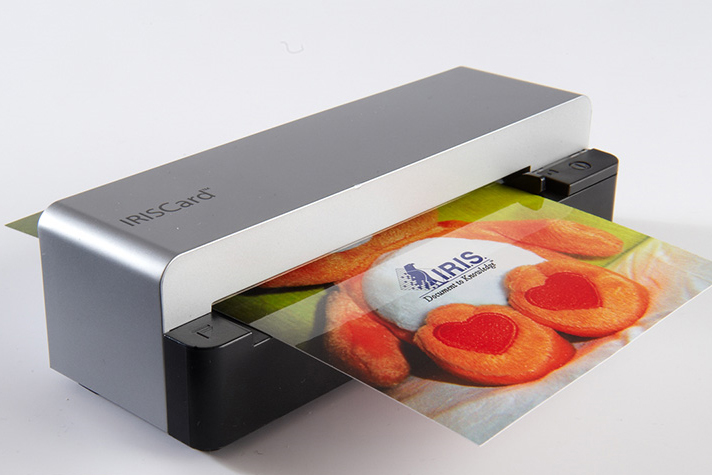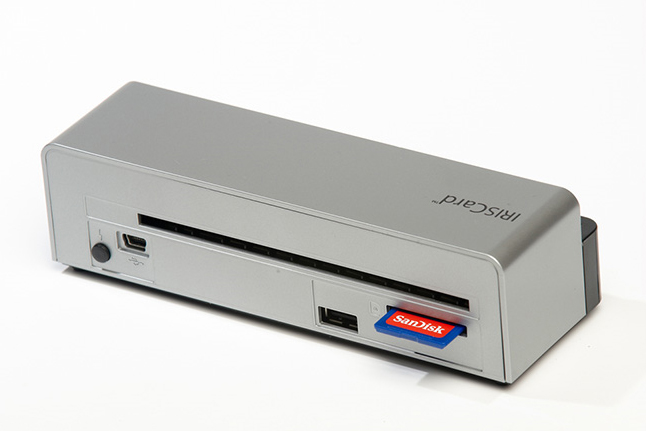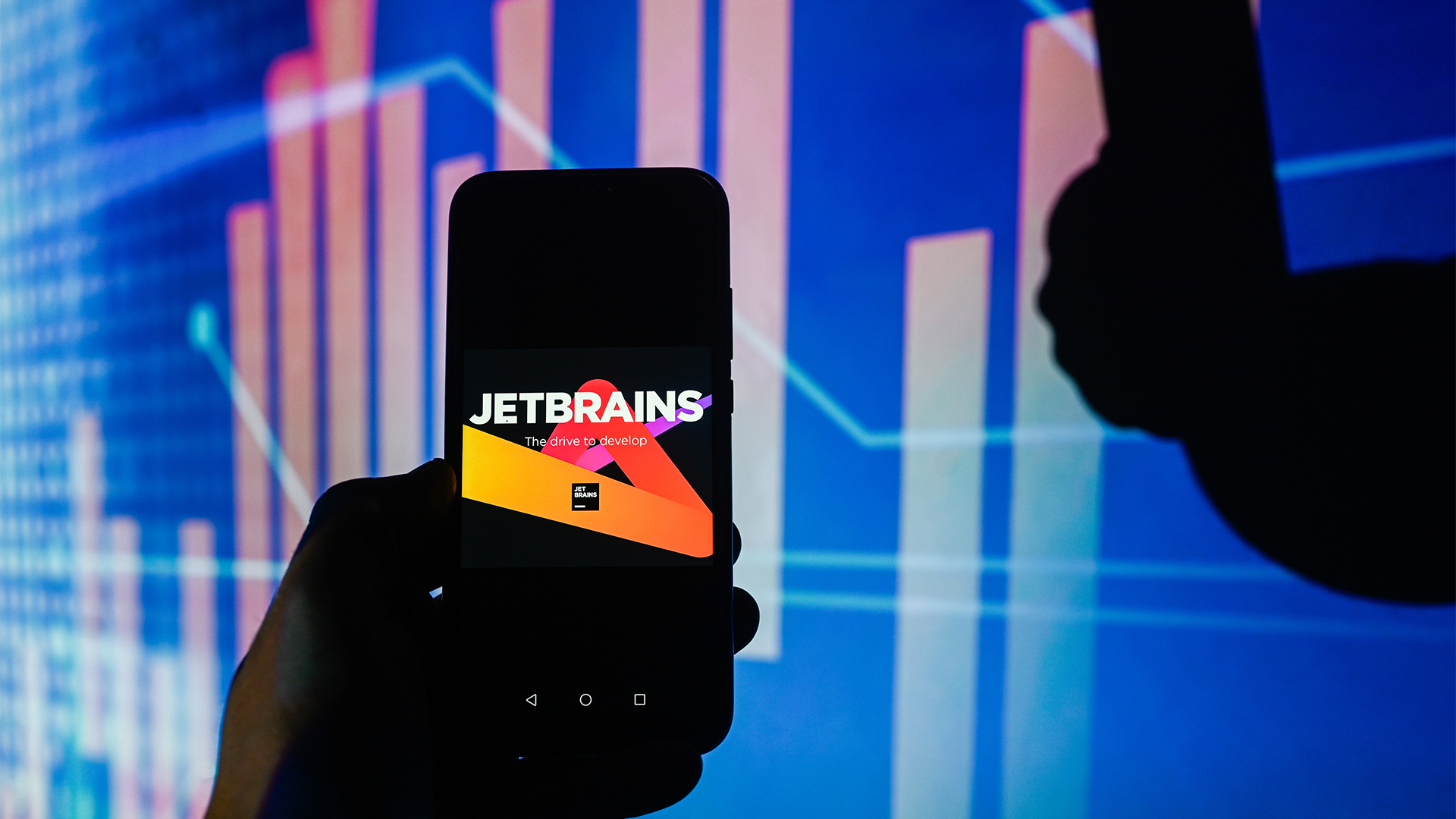Iris IrisCard Anywhere 4 review
The IrisCard Anywhere 4 business card scanner cleverly combines hardware and software to assist anyone who collects lots of business cards.
The IrisCard Anywhere 4 can be used to scan business cards and then store their contents – as well as facsimiles of the cards themselves. The CardIris Pro 5 desktop software, which works on both Macs and PCs, can be used as a contacts database and can also export contact data to a wide range of external applications and file formats. Some tweaking of the scanned and processed text may be required, but voracious business card collectors will find this perfectly acceptable.


The IrisCard Anywhere 4

The ports on the back of the IrisCard Anywhere 4
If you are the kind of person that goes to a lot of conferences or networking events then you probably find yourself picking up plenty of business cards. Even in this modern age, that old fashioned small rectangle of card seems to be the most popular way of exchanging contact details with someone you meet face-to-face.
However, when you get back to the office, you are left with the tediously time-consuming task of typing the contents of these cards into your computer. Thankfully, you can just simply scan the cards into your computer instead.
There are several business card scanners on the market. The IrisCard Anywhere, the latest model from long-standing manufacturer Iris, looks very impressive on paper. The Anywhere is a small, portable, battery powered scanner that can scan not only business cards but also other documents up to A6 in size (105 x 148mm). The bundled software can store the scanned information and export it to a wide range of applications and data formats.
The scanner's small dimensions of 160mm long, 43mm tall and 56mm deep means it shouldn't take up much room in a laptop bag. It is powered by its own internal battery, which is charged via a mini-USB cable. Iris claims the battery is good for more than 150 scans.
Since scans can be stored on the scanner's internal 512MB of flash memory, cards can be scanned without the aid of a computer. Alternatively, scans can be saved to a USB flash drive, or to an SD card (or microSD card in an SD adaptor). These ports and slots are located on the back of the scanner. A 1GB SD card is supplied which should be more than enough storage. Scanned cards are, by default, saved as JPEG files. In our tests, these were between 102kb and 228kb in size depending on its complexity.
The scanning procedure is very straightforward. Having inserted the SD card or USB stick, or left the slots empty if you want scans stored on the scanner's internal memory, you press the power button and wait the adjacent light to stop blinking. You then feed a card into the front of the scanner and it is pulled through to the back. Then you feed in another card, then another and so on.
The scanning process is fast, and usually processing is finished by the time a card is spewed out of the back of the scanner. Only really colourful cards, or those containing photographs, seemed to need a bit longer. A light flashes while processing is underway, and it goes out when processing is finished so that you know you can insert a new card.
Sign up today and you will receive a free copy of our Future Focus 2025 report - the leading guidance on AI, cybersecurity and other IT challenges as per 700+ senior executives
You can leave your business cards as JPEG files, but doing so seems like a waste when you can use the contact details from each card in other software. To make that happen, you need to use the provided CardIris Pro 5 software.
When connected via USB to your PC or Mac, the scanner's storage acts like any external drive, so you can view its contents and delete them when you've imported cards to the Cardiris Pro 5 software.
CardIris Pro 5 imports multiple scanned cards as a batch and uses optical character recognition (OCR) to read the contents of your scanned cards. It then creates entries for each contact in its database and fills in the appropriate fields. Inevitably, its OCR didn't get it right all the time, but it was pretty accurate, and the very well designed user interface makes it easy to correct any errors.
CardIris' contacts database has a fairly good range of fields for contact information including Skype number, email and web site address. You can add custom fields for otherwise unsupported information, such as a Twitter name.
The program is a basic but competent contacts manager. Data can be exported from CardIris Pro 5 to a wide range of external contact management applications including GoldMine, Lotus Notes, Outlook, Outlook Express and GroupWise, and to a variety of formats including HTML, XML, vCard, .csv, JPEG, TIFF, and even straight into an email.
It can retain the scanned card images as an aide memoir. You can view both the front and back of each card, rotate and crop cards, and even change the brightness and contrast of each image. More usefully, you can attach notes and a picture of the person in question to each business card.
There's no getting away from the fact that the OCR capability in CardIris Pro 5 is not perfect, so you will need to check every scan over and make a few tweaks here and there. This wasn't a time-consuming task though, and the scanning process is straightforward too.
Overall, the IrisCard Anywhere is a clever product that does its job well. What may prove more troublesome is being diligent enough to use it regularly, instead of accumulating a huge pile of unscanned cards.
Verdict
The IrisCard Anywhere 4 can be used to scan business cards and then store their contents – as well as facsimiles of the cards themselves. The CardIris Pro 5 desktop software, which works on both Macs and PCs, can be used as a contacts database and can also export contact data to a wide range of external applications and file formats. Some tweaking of the scanned and processed text may be required, but voracious business card collectors will find this perfectly acceptable.
Document feeding: Sheet feed type (single) Resolution (default): 300dpi Document Size (Max): Up to A6 Interfaces: SD, xD, MS, MS Pro, MMC, USB Slave (type-B Mini), USB Host (Type-A) for USB flash drive Output File format: JPEG On-board flash memory: 512MB Battery: 700 mAh Lithium polymer rechargeable battery through USB cable

Sandra Vogel is a freelance journalist with decades of experience in long-form and explainer content, research papers, case studies, white papers, blogs, books, and hardware reviews. She has contributed to ZDNet, national newspapers and many of the best known technology web sites.
At ITPro, Sandra has contributed articles on artificial intelligence (AI), measures that can be taken to cope with inflation, the telecoms industry, risk management, and C-suite strategies. In the past, Sandra also contributed handset reviews for ITPro and has written for the brand for more than 13 years in total.
-
 Google is scrapping its dark web report feature — here's everything you need to know and some alternative options
Google is scrapping its dark web report feature — here's everything you need to know and some alternative optionsNews Google said while the dark web report feature offered “general information”, the tool didn’t provide “helpful next steps” for users potentially impacted by a breach.
By Emma Woollacott Published
-
 AI doesn’t mean your developers are obsolete — if anything you’re probably going to need bigger teams
AI doesn’t mean your developers are obsolete — if anything you’re probably going to need bigger teamsAnalysis Software developers may be forgiven for worrying about their jobs in 2025, but the end result of AI adoption will probably be larger teams, not an onslaught of job cuts.
By Ross Kelly Published
-
 JetBrains is mothballing its Fleet IDE service — here’s what developers need to know
JetBrains is mothballing its Fleet IDE service — here’s what developers need to knowNews The Fleet IDE platform will be discontinued later this month and updates will stop
By Ross Kelly Published